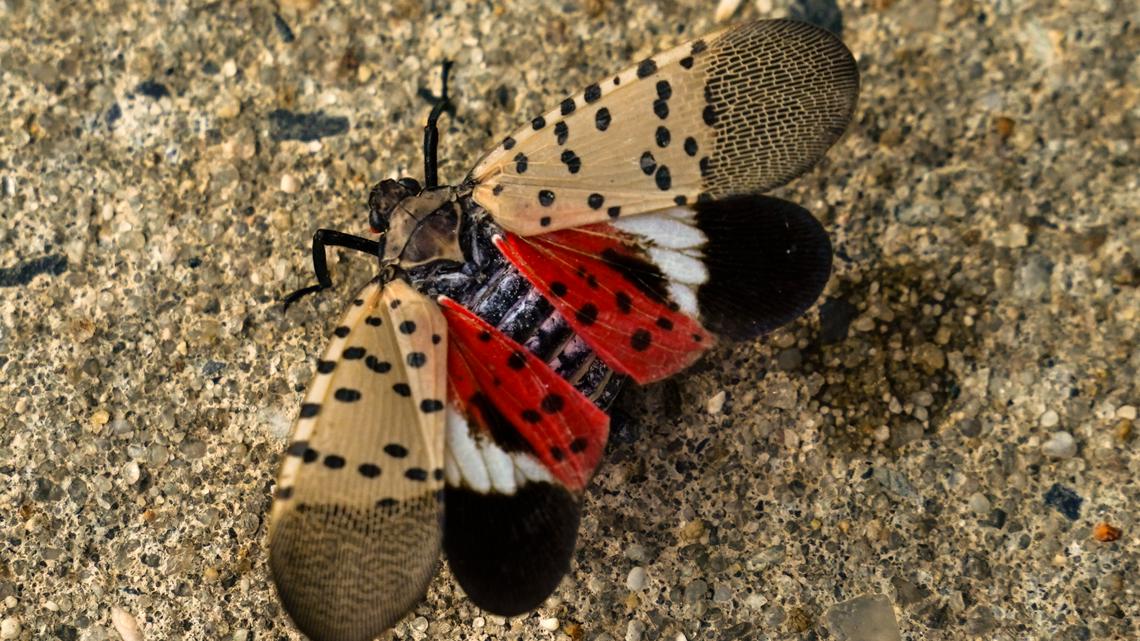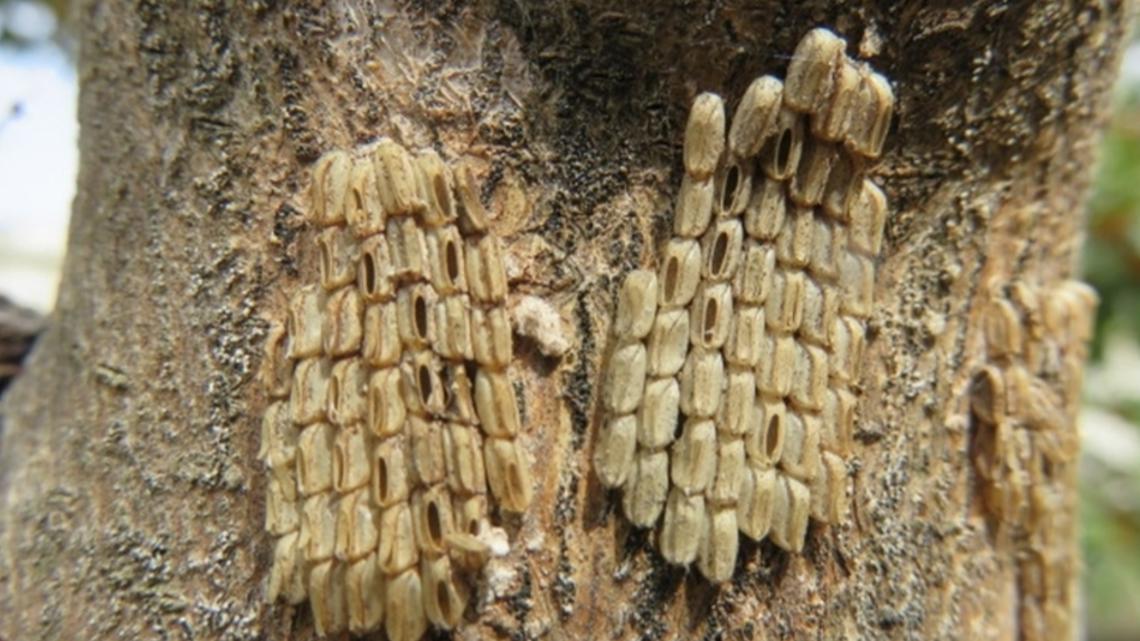GEORGIA, USA — A viral invasive fly has made its way to the Peach State, and state officials are asking you to kill them.
If you haven't already seen the videos on social media, many users have recorded videos of them capturing the invasive Spotted Lanternfly in a water bottle in an effort to kill it.
Officials with the Georgia Department of Agriculture (GDA) said that the species is a "serious threat to the state's No. 1 industry."
The first spotting in Georgia was made in Fulton County on Oct. 22. The United States Department of Agriculture's Animal and Plant Health Inspection Service confirmed the species presence in Georgia on Nov. 14.
“The Spotted Lanternfly, an invasive pest that poses a serious threat to our state’s #1 industry, has been detected for the first time in Georgia,” said Agriculture Commissioner Tyler Harper.
GDA spokesperson Matthew Agvent told 11Alive's Chief Meteorologist Chris Holcomb that the invasive species was first seen in Pennsylvania in 2014 and has spread to 17 states, including some in the southeast region.
Agvent added that it wasn't a matter of if, but when the species would come to Georgia.


What to do if you spot a Spotted Lanternfly
GDA said that the best way to make sure the species is not a threat is to take immediate action.
Here are the following steps you should take:
- Take a clear picture.
- Kill it (whether that's swatting at it or squishing it)
- Report your sighting here.
“We urge anyone who sees the Spotted Lanternfly in their area to document it, report it, and kill it. Controlling the spread of the Spotted Lanternfly is our best strategy for safeguarding Georgia’s agriculture industry, and we are asking for the public’s help in this effort," Harper added.
The department added that residents can also seek licensed pesticide professionals; click here for the companies and contractors.
Why are officials asking you to kill the fly?
Agvent added that the files do not pose a direct threat to humans but pose a threat to Georgia's agriculture.
The species weakens various plants, including grapes, hops, stone fruits and hardwood trees, by feeding on them and producing a sticky, sugary fluid that encourages mold, harming crops.
Spotted Lanternflies lay their eggs from September to November. Those eggs survive through the winter months and then hatch in the spring, according to the department. Officials expect them to be in the egg-harvesting stage of their lives over the coming weeks.
The adult lanternflies die with the first hard frost.


To learn more and get advice about how to control the flies, click here to speak with your local University of Georgia Cooperative Extension office.

